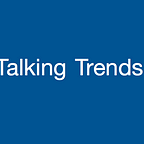Rebranding & Reputational Risk - William E. Oliver
The concept of rebranding for a company involves uncertainty, but it also gives insight into a sea of opportunity and what could be. In today’s reputation economy, firms with strong positive reputations get the best, and do the best. They are perceived as providing value, attracting loyal customers, and being able to successfully provide a wide range of products and services. More organizations are becoming conscious about their reputation and the risks involved with rebranding.
William Oliver, enterprise risk manager and an ambassador for positive change, discusses his view on rebranding and reputational risk.
Will, the reputational risk every company undergoes when rebranding is inevitable. Rebranding involves changing the corporate image of an organization without losing touch with its core values and mission. You mentioned rebranding the Y you were involved with; what were the challenges and how did you overcome them?
“The rebranding effort at the Y is something that is still ongoing. Several years ago one of the missions was to educate the full person — inside and out, healthy mind, body and spirit. That also involves diversity. One of the things the Y realized on their branding is that at the corporate level it is still the YMCA which stands for the Young Men’s Christian Association, which at the time encompassed the YWCA. In order to be more inclusive, we took a look at revisiting the brand.
“Interestingly enough, when the national department for marketing and branding reached out to the regional levels, they were dumbfounded to learn that the local branches had not fully incorporated the new national branding campaign. That’s often a problem with non-profits — a lack of consistent activity even though the vision and mission are very clear. The decisions made at the national level at the time, were not filtering down regionally.
“The challenges in such a situation are usually resource-driven. In a conversation, the ideas and thoughts flow naturally, but funding the execution can create a hiccup. For the Y, we benefitted from the national roadmap which had been laid out initially. We chose which aspects of it to incorporate into the Y for the Charlotte Metro region. Once that was taken care of, the next challenge was putting forward our branding and messaging without losing focus on the community. We did so by creating sub-committees which were led by employees of the Y. From a communication standpoint, they were able to speak the “language” which people would relate to, and communicate with the national marketing committee.
“Another challenge which can often come up with non-profits is that they are so well intentioned, that they slow themselves down. Bringing my entrepreneurial mindset can sometimes be a good reminder to keep an eye on the ball. The do-good mentality keeps them so in check that it gets in their way as they do not want to upset anyone. However, following basic principles like being honest, open and transparent, facilitates decision making and creates trustful relationships.
“The aspect of timely execution is what I want to drive home. Our members in the sub-committees are used to moving large projects forward, they get work done with each stakeholder in mind. In my field, I would call this creating an opportunity. An opportunity was created to engage with communication leaders and this allowed us to get into conversations with so many local players — country boards, recreational facilities and other religious organizations.
“Something which drove success in this scenario was that we were focused on a very particular goal, which is why conversations were streamlined and created the greatest impact. At the end, our model was able to build a blueprint for another regions as well. We were able to prove that we are more than just a religious organization or a gym. We are a part of a larger community and we now operate as such. The project with the Y was a successful endeavor and closed a lot faster than expected, because we were able to tap into resources quickly.
“When talking about reputational risk, when you have open conversations you open yourself up to criticism and awareness to the community which you never knew existed.
You may potentially turn away current benefactors; they may have come in with a certain mindset which changes when you rebrand. So when you rebrand it’s possible that you may no longer serve certain parts of the community and clientele. This is a risk you have to be aware of and decide whether to take it, or not.”
Thank you for sharing, Will.
